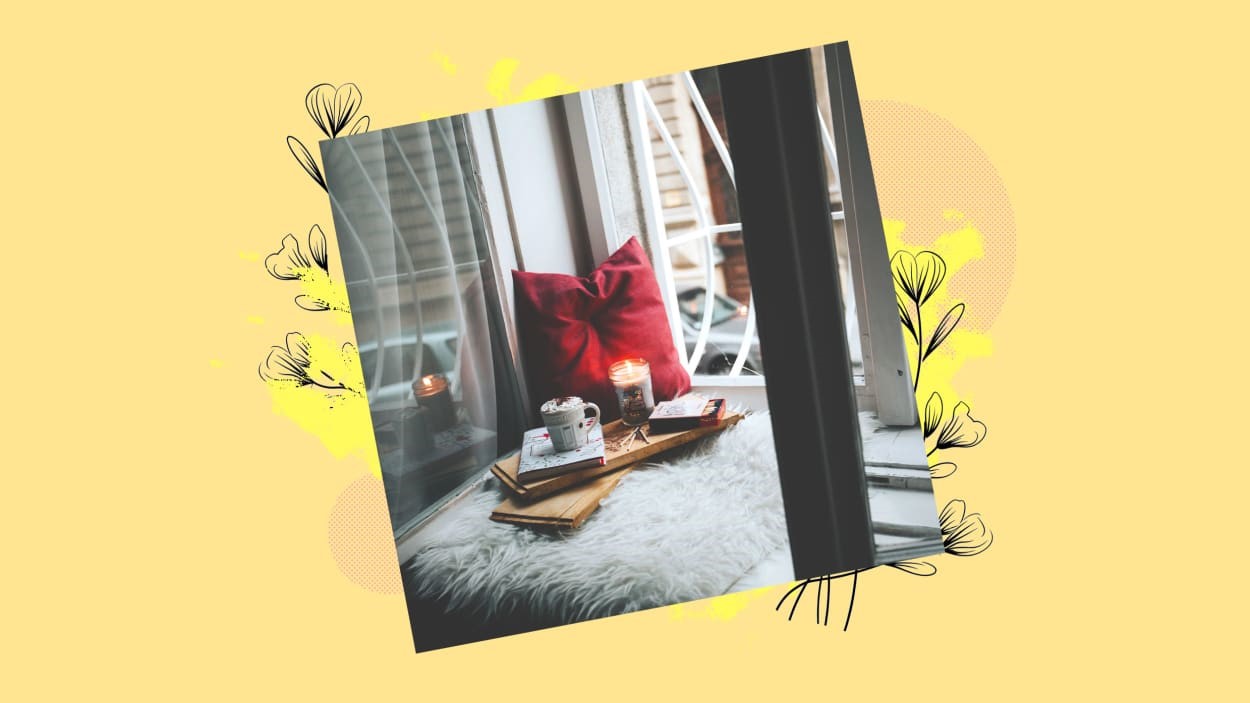How a creative retreat can help you—even if you’re not a creative
By Gwen Moran
The time had come to carve out some time for a creative project that had taken up space in my head for far too long. I had seen friends who went off on creative retreats, so when a friend suggested we create our own, I was all in. I knew from previous research that making time for creativity has some distinct benefits. While things didn’t go exactly as planned with my retreat, the result was a surprisingly productive experience that not only helped me make progress on my novel but also left me feeling more energized and sharper in my day-to-day work after I returned.
Time for thought
As it turns out, I’m not alone in touting the benefits of such self-directed timeouts. Sarah Snyder, longtime retreat-taker and author of DIY Solo Retreats: A Handbook for Creating Your Space, Setting an Intention, and Getting the Self-Care You Deserve, says that the benefits of self-directed retreats include being able to tailor them to your goals, preferences, and personality. Whether you go solo or with a group, depends on what you prefer and whether you need time without the distraction of others or the accountability and company of companions. “You might be the type of person who’s more inclined to get down to the business of retreating when you have others present,” she says.
Writer Laura Laing has participated in both solo, self-directed retreats and more structured getaways. Both have benefits, she says. Laing also takes solo retreats at a family property, where she often spends part of her time writing and part of her time working on renovation projects. She says that such getaways are not just for creatives who want to focus on a work-in-progress; they’re good for anyone who needs time to think deeply.
“I highly recommend this for CEOs or senior execs, or maybe even those who have small companies who need to spend some time thinking about what is going on with the company,” she says.
Planning your escape
The “retreaters” had some suggestions for getting the most out of your time away. So, as you think about your own getaway, keep these tips in mind.
Set yourself up for success
Snyder says it’s important to head into your retreat with an idea of what you want to accomplish. “I tend to distinguish between an intention and a goal. An intention is what you want to get out of something overall, and your goals are basically the steps to achieve that,” she says.
Choose a location
Storyteller, comedian, and writer Ivy Eisenberg began planning retreats with her writer’s group several years ago. (Disclosure: She was also a participant in my retreat.) Eisenberg and a few other members of her group booked rooms at a nearby hotel and set aside time to work on their projects, but also met up during the course of their days to discuss their work. “We were two miles from where I live,” she says. “It’s different, because you’re placing yourself in another environment, and you’re claiming, ‘This time is for me.’”
But Snyder says you can do a retreat anywhere. If time or money is tight, head to a park or museum. For example, she lives near the National Gallery. “[It] has beautiful niches where you can just go sit on a bench,” she says. “The galleries are quiet, and you’re still surrounded by beauty and art and creativity.”
Bring your supplies
Snyder says your goals will help you determine what you need to bring with you on your retreat. Will you need your laptop? Notebooks and pens? Laing likes to bring a roll of butcher block paper and a collection of fun, colored markers. She writes her ideas on paper. “I will sit on the floor with music blasting, just watching, just trying to think of what’s coming next and how I’m going to arrange things. So, it’s a very visual process for me,” she says. (Of course, some of these recommendations won’t work if you’re taking the museum route for your retreat.)
Eisenberg says bringing creature comforts can also be important. Whether you need slippers, good coffee or tea, or cookies, pack them up and bring them along.
Structure your days
Snyder says it’s a good idea to have some structure in your days, so you make the best use of your time. But don’t be overly scheduled, as the goal is to allow yourself time to think and be creative.
Laing finds that she “flips” her schedule. She will build an evening fire by the creek and sit and write “until two or three in the morning. “It’s the complete opposite of how I work at home,” she says, adding that she may typically rise at 4:30 a.m. to start her day. “I just reverse that schedule, and I think that might [be] some kind of weird creative piece of it,” she says.
Make time for you
During my retreat, I wanted to interact with other people. Our group planned shared meals and even ate at the historic Black Bass Inn at a repurposed (and well-sealed) table once used for autopsies. These fun encounters and new stimuli helped make the time feel special. However, plan your “you time” according to your own preferences. Perhaps daily walks are more your style than a touch of the macabre. In her own retreats, Snyder sets aside time for daily meditation.
Be realistic and celebrate your progress
It’s easy to overestimate how much you can get done over the course of a few days. After Eisenberg finished roughly three days at our retreat, “I didn’t [write] 20,000 words; I didn’t write the Modern Love essay that I wanted to write,” she says. But she did create an impressive visual representation of her memoir, mapping out the story’s flow and structure. And that was a winning outcome, she says.
Taking time for creative practices may feel indulgent, given the demands many of us have on our time. However, a body of work has emphasized the importance of both taking breaks and integrating creativity into our downtime are good for us in a variety of ways.
(21)



